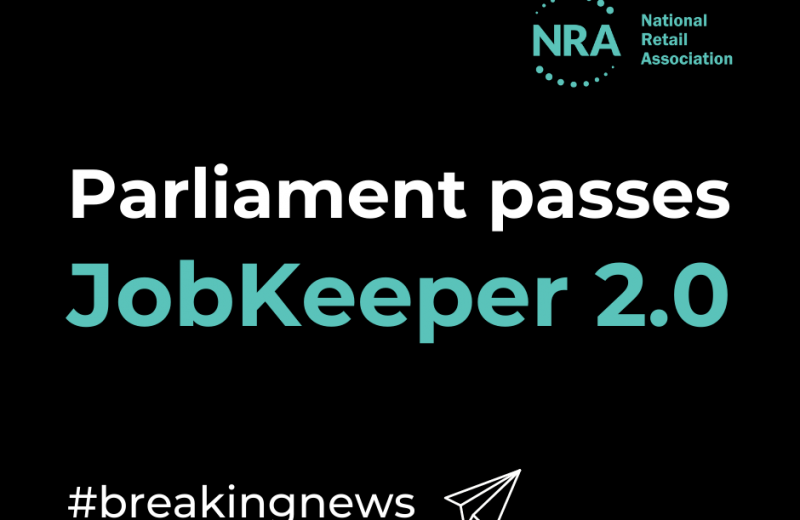This afternoon, Parliament passed the Coronavirus Economic Response Package (Jobkeeper Payments) Amendment Bill 2020 which gives effect to the previously announced extension of the JobKeeper Payment Scheme until 28 March 2021.
To continue participating in the scheme after 27 September 2020, employers will need to meet revised eligibility requirements, and reassess their eligibility for each subsequent phase of the scheme.
For the period 28 September 2020 to 3 January 2021, employers will need to demonstrate that their actual GST turnover had fallen in the quarter ending 30 September 2020 by at least 30% (or 50% if their aggregated annual turnover of $1 billion or more). For the period 4 January 2021 to 28 March 2021, employers will need to apply the same test for the quarter ending 31 December 2020.
However, the amendments also extend the operation of ‘JobKeeper enabling directions’, which allow employers currently participating in the JobKeeper Payment Scheme to direct their employees to reduce their hours of work, perform alternative duties, or work from a different location.
Further, the amendments create a new class of ‘legacy employer’, which allows employers who will no longer qualify for the JobKeeper Payment Scheme to issue a limited form of ‘JobKeeper enabling directions’, provided they meet certain criteria.
Participating in JobKeeper after 27 September 2020
Employers who will remain eligible for the JobKeeper Payment Scheme after 27 September may also continue to issue JobKeeper enabling directions after this date. The consultation period for issuing a JobKeeper enabling direction will also remain at 3 days for the next two phases of the scheme.
However, unlike JobKeeper 1.0, employers participating in the scheme will no longer be able to direct employees to take annual leave.
Not participating in JobKeeper after 27 September 2020
From 28 September 2020, ‘legacy employers’ will be able to issue limited forms of ‘JobKeeper enabling directions’ despite not participating in the JobKeeper Payment Scheme.
To be eligible as a ‘legacy employer’, the employer must have:
- previously participated in the JobKeeper Payment Scheme;
- experienced a decline in turnover of 10% during either the quarter ending 30 September or 31 December 2020; and
- obtained a certificate from a financial service provider confirming the decline in turnover for the quarter (unless they are a small business employer who makes a statutory declaration to that effect).
Once a certificate has been obtained, a ‘legacy employer’ may issue a JobKeeper enabling direction for the JobKeeper phase immediately following the quarter for which the certificate was obtained. For example, if an employer has a certificate for the quarter ending 30 September 2020, they are able to issue a direction for the period 28 September 2020 to 3 January 2021.
The types of directions that may be issued by ‘legacy employers’ are also reduced. Unless the employee agrees otherwise, they must be provided with at least 7 days’ notice of a direction, during which time the employer is required to consult with the employee about the direction. Under the amendments, consultation must include:
- providing the employee with information about the nature of the direction, when it takes effect, and the expected effects of the direction on the employee; and
- inviting the employee or the employee’s representative (if any) to give their views about the impact of the proposed direction.
Directions issued by ‘legacy employers’ also must not result in an employee working less than 60% of their ordinary hours (as at 1 March 2020), or less than 2 consecutive hours on any day.
The NRA’s JobKeeper Guides will be updated shortly to reflect these changes.


